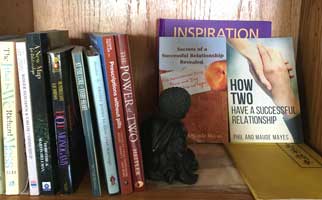Successful Relationship Reading Corner

We wrote in this week's blog on how to blend connection and separation in your relationship, and as usual, we've tracked down some other articles on this topic. Enjoy!
Balancing Togetherness and Individuality "Mutuality is one of the most important aspects of marriage success. But how do you become part of a couple while maintaining a strong sense of yourself? How do you manage your need for time together and time apart? And what do you do if you and your partner have different ideas of how much time to spend together? How much time together is enough? Is there such a thing as too much togetherness? Is there a way to maintain closeness even when your work life is especially demanding of your time and attention, perhaps including prolonged separations?"
Time Together vs. Time Apart: Which Is More Important? "How much time should a couple spend together? Apart? That’s the tug and pull of many couples. Too much time together could make one partner feel suffocated. Too much time apart could make one partner feel isolated. So how much time is best? There’s something most couples overlook that I’m going to share."
Developing a healthy balance between separateness and togetherness in relationships "One family-of-origin theorist, Murray Bowen (1978), developed a theory called ‘differentiation of self’ that is helpful when looking at issues around closeness and separateness in relationships. Research (Skowron, 2000) has shown that couples who demonstrate a higher level of differentiation are more likely to be satisfied in their relationship. On an individual, internal level differentiation of self refers to a person’s ability to distinguish between self and other and between the more rationale and the more emotional parts of our self."
|